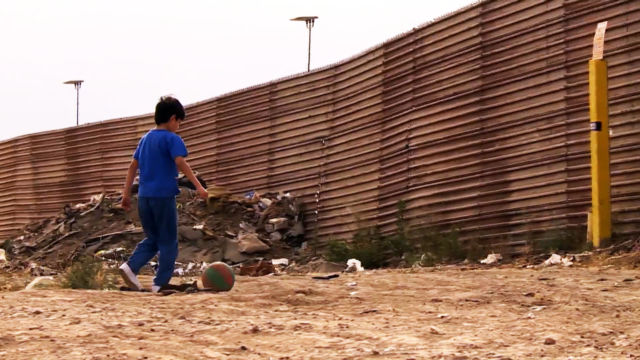As Mexicans prepare to choose a new president in July, their country continues to receive verbal attacks from U.S. President Donald Trump. Much of the friction centers on Trump’s insistence on building a border wall, which he says will enhance U.S. security.
As part of our series, Rediscovering the New World: 2018 Elections in Latin America, CGTN correspondent Franc Contreras reports on the history of the U.S./Mexico border.
The border separating the United States and Mexico was created after the Mexican-American war in 1846. The two sides fought for control of the territory now known as California and Texas. By the time the conflict was over, U.S. soldiers had captured Mexico City and raised the American flag.
The borderline was drawn in 1853. On the eastern side, a river marks the boundary between Texas and northern Mexico. And to the west, lines in the desert separate the U.S. states of California, Arizona and New Mexico from the Mexican states of Baja California, Sonora and Chihuahua.
Historian Lorenzo Meyer says once the borderline was drawn, Mexico had lost 55 percent of its national territory.
“Mexico’s northern border has always been a conflict zone between the U.S. and Mexico,” said Meyer. “First, because of the territories lost, but afterwards because our two civilizations.”
Conflicts have characterized bilateral relations along the 3,000 kilometer borderline, according to Meyer, in part because of vast differences in the two country’s economies, culture and geography.
“This is one of the biggest problems: there is no natural border between Mexico and the United States. And our visions of society are so different when it comes to religion, politics. Even racial attributes, which are so important right now. So it’s a very complicated relationship.”
Those complexities marked border relations during the Mexican Revolution. In 1916, Pancho Villa raided the U.S. town of Columbus, New Mexico. U.S. General John Pershing led six thousand American soldiers into Mexico in a failed attempt to hunt him down.
Decades after its creation, the U.S/Mexico border was virtually wide-open, with just a few stone monuments marking the international boundary.
They’re part of the history of the U.S./Mexico border, and they are still in place to this day.
RISE OF BORDER SECURITY ERA
Over the years, hundreds of thousands of undocumented immigrants have crossed the border illegally into the United States. That led both democrat and republican U.S. presidents to build border barriers. Following the attacks of September 11, 2001 on New York and Washington, an era of enhanced border security ensued.

U.S. President Trump inspects several wall prototypes only meters from Mexico and one of the poorest neighborhoods in Tijuana. (IMAGE: AP)
Donald Trump has tried to capitalize on the anger over undocumented immigration by promising to build a large border wall. He installed eight prototypes, placing them just across from one of the poorest neighborhoods in Tijuana.
“If you don’t have a wall system, we’re not going to have a country, said Trump. “There’s a lot of problems in Mexico — they have a lot of problems over there, and they have the cartels. We’ve been fighting the cartels. Nobody ever fought them like we fought.”
In the 170-year history of this controversial international boundary, President Trump’s wall prototypes are just the latest man-made objects designed to mark the border between the United States and Mexico.
Commerce is also part of the history of this border. Tens of thousands of commercial and private vehicles passing over it daily, making this international divide one of the world’s busiest land crossings.

Families and loved ones separated by the national border often meet along the fence between Tijuana and San Diego.
It’s also a place where families are reunited, where many thousands of international tourists come to visit each year, and where art thrives.
For better or worse, the U.S./Mexico border is also a place where the destinies of two neighboring nations are forever joined.










